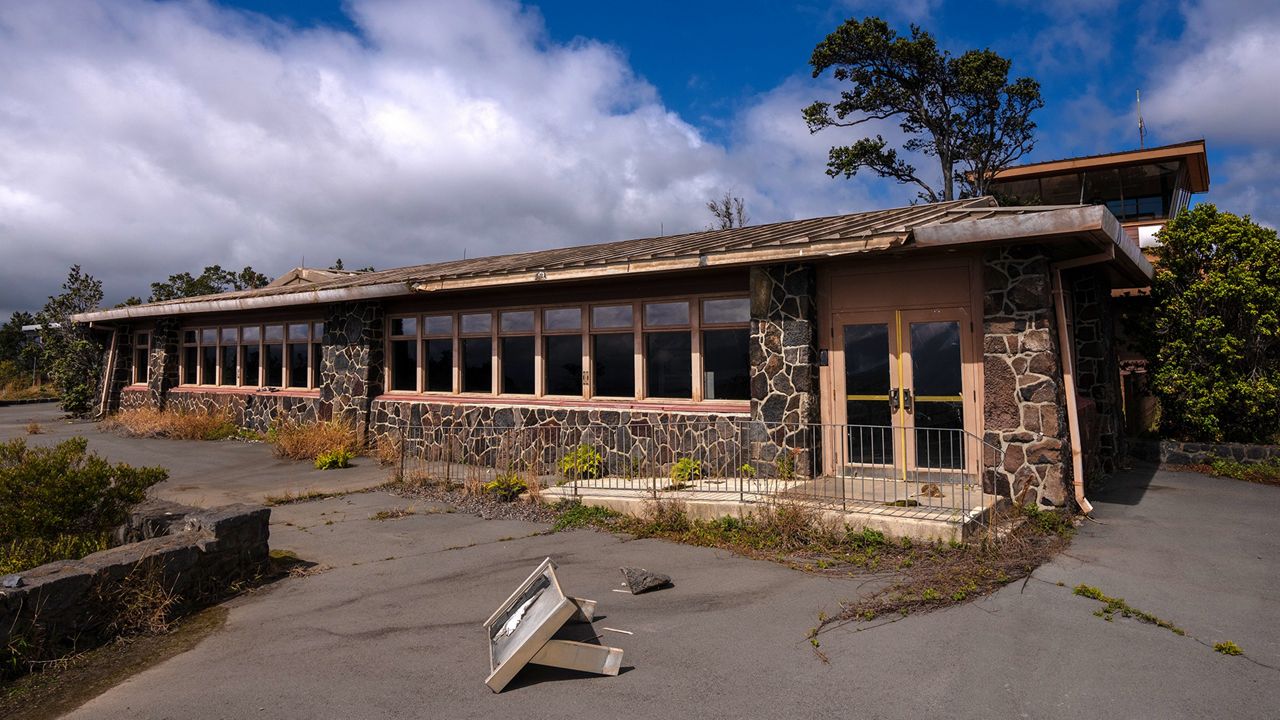Jaggar Museum and other structures at Hawaii Volcanoes National Park will be removed in the coming weeks, according to a news release.
In 2018 at Kilauea summit, magma drained from the chamber beneath Halemaumau crater, and the caldera collapsed, triggering thousands of earthquakes. The seismic activity near the crater affected buildings on Uekahuna bluff, including Jaggar Museum and the U.S. Geological Survey Hawaiian Volcano Observatory buildings. Since then, the area has been closed.
Post-disaster assessments found fault lines surrounding the buildings, and the area continues to subside on the crater side, undermining the building foundations.
On Wednesday, contractors began the Disaster Recovery Project by fencing off Jaggar Museum, the former USGS HVO buildings at Uekahuna and part of the parking lot.
The construction project will use the Uekahuna parking lot and the gravel overflow parking lot at Kilauea Visitor Center for the staging area. HVNP is not permitting vehicles longer than 25 feet and wider than eight feet to go past Kilauea Military Camp.
Crews will also realign Crater Rim Drive to improve safety and reduce congestion at the park entrance, add an administrative lane, and install a roundabout beyond the entrance station.
The Disaster Recovery Project will restore Uekahuna to a more natural landscape, as the area is sacred to Native Hawaiians and other groups. Crews will remove buildings but the observation deck will remain. Signs will be minimal.
“Park visitors, tour operators and the community should expect reduced parking, delays at the entrance station, and the potential for temporary area closures, especially if a summit eruption occurs during construction,” said Hawaiʻi Volcanoes National Park Superintendent Rhonda Loh.
Loh also thanked visitors and the community for their patience.
After the 2018 volcano eruption, Hawaii Volcanoes National Park and the USGS Hawaiian Volcano Observatory received input from the public and completed an Environmental Assessment. The park released a Finding of No Significant Impact on the plan.
The new USGS HVO field station will be near the historic ball field at Kilauea Military Camp, but construction, which is already underway, is not expected to affect visitors. Decorative stained glass, plaques, rock work and other materials from the original HVO buildings will be used in the new facility.
The contract for the first phase of the project is for 600 days. The second phase of the project includes the rehabilitation of Kilauea Visitor Center and is expected to start in the Fall.
Find updates about construction on the park’s website.
Michelle Broder Van Dyke covers the Hawaiian Islands for Spectrum News Hawaii. Email her at michelle.brodervandyke@charter.com.



